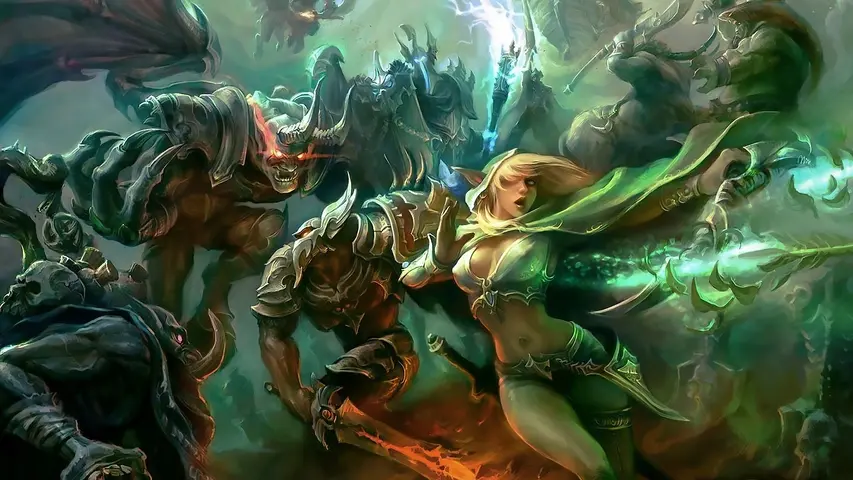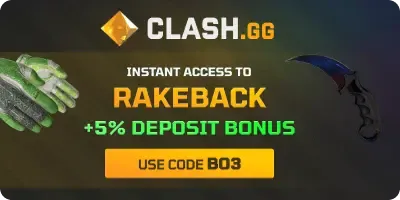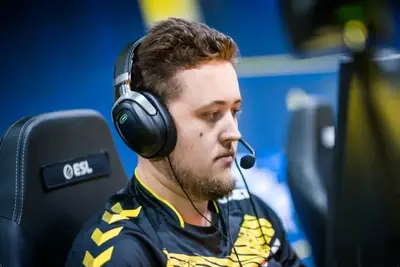
History and Evolution of Dota 2: From DotA to Esports Giant
Defense of the Ancients or Dota 2 is a multiplayer strategic team-based action game of the MOBA subgenre released by Valve in 2013. Over the past ten years, the game has undergone significant changes in terms of some mechanics, features, balance, and other elements that distinguish it from the game it was at the beginning. But despite this, the general approach to gameplay has remained unchanged. Over the years, the game has hosted many tournaments with high prize pools, making Dota 2 one of the most popular esports disciplines. However, the history of the game begins much earlier than 10 years ago. And while the older generation of gamers can still remember how it all began, the new generation may not even know.
DotA prototype — Aeon of Strife
In 1998, Blizzard Entertainment released one of the most popular strategies of that time, Starcraft. One of the features of this game was fan maps, and one of them was the "Aeon of Strife" expansion, created by a player with the nickname Aeon64. The essence of the gameplay of this map was different from other strategy games.
In this mode, a player could control only one character. There were 4 players in the team, who had to fight against waves of creeps controlled by AI that moved along four lines. The team of players also had creeps, but they were slightly weaker than the enemy team. The main task on the map was to destroy enemy buildings. However, if all 4 heroes died, the game ended. After a while, a new version of the map was released, in which players played against another team of players in 2v2 mode instead of AI, and the computer still managed the crypts. The game had a limited number of heroes who earned gold by killing creeps, and they could spend it on equipment upgrades. However, the game did not have many mechanics, a leveling system, development, and abilities.

Warcraft 3: Aeon of Strife
In 2002, Blizzard released the third part of another of its cult series, called "Warcraft III: Reign of Chaos". Along with it, the World Editor map editor was available, which was much more convenient and interesting for users. Therefore, fans of the previous Starcraft mode ported Aeon of Strife to the Warcraft 3 engine. Now heroes could have abilities, wear items, and level up from the first to the tenth, which gave the game a chance to develop. The popularity of the mode increased significantly, and players and modders began to copy the main idea of the mode for their maps.

Defense of the Ancients
In the same year, one of the Warcraft players with the nickname Eul created a map called "Defense of the Ancients". He took all the best or at least the main ideas from other similar maps and transferred them to his version of the map. It had 32 heroes to choose from and 39 items that could be purchased for your character.
A year later, Blizzard released the sequel expansion "Warcraft III: The Frozen Throne, which brought interesting changes not only to the storyline of the game but also to the creators of various maps. These features include new heroes, units, textures, models, and items. The editor itself has also undergone some changes, which has expanded the tools and possibilities for fans.
Eul decided to update his map by creating a kind of sequel called DotA 2: Thirst for Gamma in TFT. However, this expansion did not have the same success as the previous version of the map. Other fans developed various versions of their maps, even creating custom characters by integrating different characters from TV shows and video games. But none of these maps were popular, and Eul himself abandoned his attempts to develop the map for a while, but left the code of his work open for other creative players to use.

Warcraft 3: Dota Allstars
In 2004, two map creators, Meian and Ragn0r, collected interesting developments from previous maps and proposed their map name — "DotA Allstars" and posted a beta version v0.95. However, they failed to get the balance between characters and some items right, so they never brought the game to its fullest potential.
Another map creator, Steve Fick, under the nickname Guinsoo, took over the fate of Dota. He, like the previous developers, began to look through various interesting map options and also began to correct the balance, which others could not do. Firstly, he did it to make a more or less normal map to play with his friends. This way, the map quickly got more and more versions.
Guinsoo proposed a newer item system in Dota, dividing them into different tier and price categories. Players mostly bought artifacts at the end of the game, getting more gold and immediately taking strong items to avoid selling various intermediate versions, losing part of the amount from the sale. This was the impetus for the map's creator to introduce a recipe system, thanks to which stronger items were created from cheaper ones. Another Guinsoo was the runes that appeared in the center of the map, which gave various temporary bonuses to heroes.
Guinsoo became a revolutionary in the development of the MOBA genre, as it changed the vector of the map's development. From PvE, which was based more on the fight of heroes against creeps than against heroes of the opposite team, to PvP. Therefore, the map creator did everything to redirect the balance in this direction. For this purpose, the reward for killing heroes was increased, a longer revival time was introduced, and sound notifications for a series of kills were added.
In 2004, Dota Allstars v4.0a introduced one of the most recognizable characters in gaming, Roshan, who was named after a bowling ball owned by Guinsoo himself. The idea was taken from online cooperative games where players had to team up to kill a difficult boss. As a reward, Roshan was given an Aegis and cheese.

Further development of the map
Since Guinsoo didn't have enough time to develop the add-on on his own, he engaged his friends from the Team Dota Allstars (TDA) clan to help him with the development. They were Neichus, IceFrog, Pendragon, and a few other friends. They created their website dedicated to Dota Allstars, where they posted the latest versions of the map, received feedback, and discussed how to improve the mode. New heroes began to appear in the game, the balance was corrected, and the game's stability and performance were improved.
Later, after the release of DotA Allstars v.6.01, Guinsoo announced that this was the final version, and he would not support the game's development in the future. Therefore, IceFrog and Neichus became his successors. They began to add even more new characters, and the idea of a courier delivering items to players appeared. However, the developers missed the most important thing — balance, and therefore some players continued to play the old version owned by Guinsoo. Dota tournaments began to be held on version 5.84c. Neichus's inability to balance everything he added to the game and criticism from map fans forced him to quit working on the game, leaving everything to IceFrog.
IceFrog didn't abandon the game, but still tried to fix all the flaws to make his version of the game as competitive as the 5.xx versions. He started improving not only the character balance but also the approach to the map. Later, he decided to increase the target audience by adding localizations for the map, including Chinese. Thanks to this, Chinese players discovered a new game and became fascinated by it, which made Dota very popular in China, which we can see to this day. Each new version of IceFrog fixed some bugs and shortcomings, made changes to the balance, made changes to the landscape, and more.
On October 10, 2005, a Dota tournament was held at the official Blizzcon exhibition, and the popularity of the map made it an official eSports discipline. In the same year, DotA Allstars v.6.27b was released, which fully brought this custom map to a new level, the balance was at a high level, and many changes could not be ignored. Therefore, this version of the game became the official one for further tournaments. Many subsequent patches introduced more and more new elements to the game, which were gradually balanced, in particular, based on the results and feedback from professional players.

Competitors
Due to the popularity of the game, Riot Games developers decided to create a separate project based on Dota Allstars called League of Legends. Subsequently, this trend was picked up by other game developers, but as a result, most of these projects were not as successful, and now no one knows about them, with League of Legends being the only exception. At Blizzcon 2010, Blizzard announced its version of the standalone game Blizzard DOTA, which was later renamed Heroes of the Storm. The game was released in 2015. However, as a result, it still did not become as popular as Dota Allstars, Dota 2, or LoL.
DotA 2
In 2010, Guinsoo, who returned to work on DotA, invited his colleagues to join the development of League of Legends. Some of them accepted the offer, but IceFrog refused and continued to work on maintaining the DotA map. Pendragon, who maintained the game's website, also left the team, and therefore the site had to be closed, but it was replaced with a new one.
Due to the competitor League of Legends, where many functional actions were performed automatically, such as searching for allies, matches, and several other technical issues, DotA began to lose fans. It took more work to play on personal computers than in some online clubs. Technically and morally, DotA was considered old.
The way out of the situation was to move the game to an independent engine, independent of Battle.net and Warcraft III. This was facilitated by cooperation with Valve, who agreed to become a publisher for Dota 2. And even despite various legal issues with Blizzard at the beginning, the developers managed to retain ownership of the Defense of the Ancients title. On the new engine, the game retained the gameplay experience of the old game, but in a better way.
In 2011, Valve announced a tournament for the early version of Dota 2 called The International, with a prize pool of $1 million. This event was watched by DotA fans from all over the world, which only increased the enthusiasm for the game. However, the game was not yet complete at that time, and it was too early to release it. It was only in the summer of 2013 that the game became available to everyone. And in June 2015, IceFrog stopped supporting Dota Allstars, fully devoting itself to Dota 2.

The future of DotA 2
The limitations of the Source game engine did not allow developers to continue to implement their plans. Therefore, in 2015, DotA 2 was switched to the Source 2 engine, and the game was subtitled Reborn. And the game came out of beta mode, but jokes about it remain in the gaming community for various reasons, but mainly because of the balance. The presence of bugs and higher system requirements slightly reduced the overall online performance. The interest of players was maintained by various innovations, although many did not like them.
Unlike the first Dota, the new game had a much better lore foundation, which became interesting to study. A large amount of content on the Internet is dedicated to this, including the search for various secret details that refer players to the emergence of new future game characters.
Numerous cyber tournaments dedicated to Dota 2 are still relevant, and the prize pool for participating in competitions is always growing. Compendiums have always been tied to The International, which was later replaced by Battle Pass, a kind of reward system for completing some tasks and achievements. It was Dota 2 that gave all other games such a microtransaction system.
The game has opened up the possibility of conveniently creating and adding your modifications of fan game maps. Thus, Dota 2 spawned two related projects: Artifact and Autochess. However, neither game was very popular. Dota 2 began receiving various updates that dramatically changed the game, making it much more complex and rich than its original. New systems of abilities, talent leveling, new items, etc. appeared. An anime series based on the game appeared, which was quite warmly received by the audience. The latest update brought even more additions to the character ability system, which made the game more interesting, although not for everyone.

Conclusion
So as we can see, Dota 2 has come a long way in its development and growth, and it doesn't look like it will stop anytime soon. Of course, there are still some problems or solutions in the game that are supposed to attract more audiences or bring back some old fans, but it doesn't always work. The success of Dota 2 cannot be underestimated, and the presence of a toxic community of players does not make the game bad, although it is its Achilles' heel.
Article info
Gaming




Comments